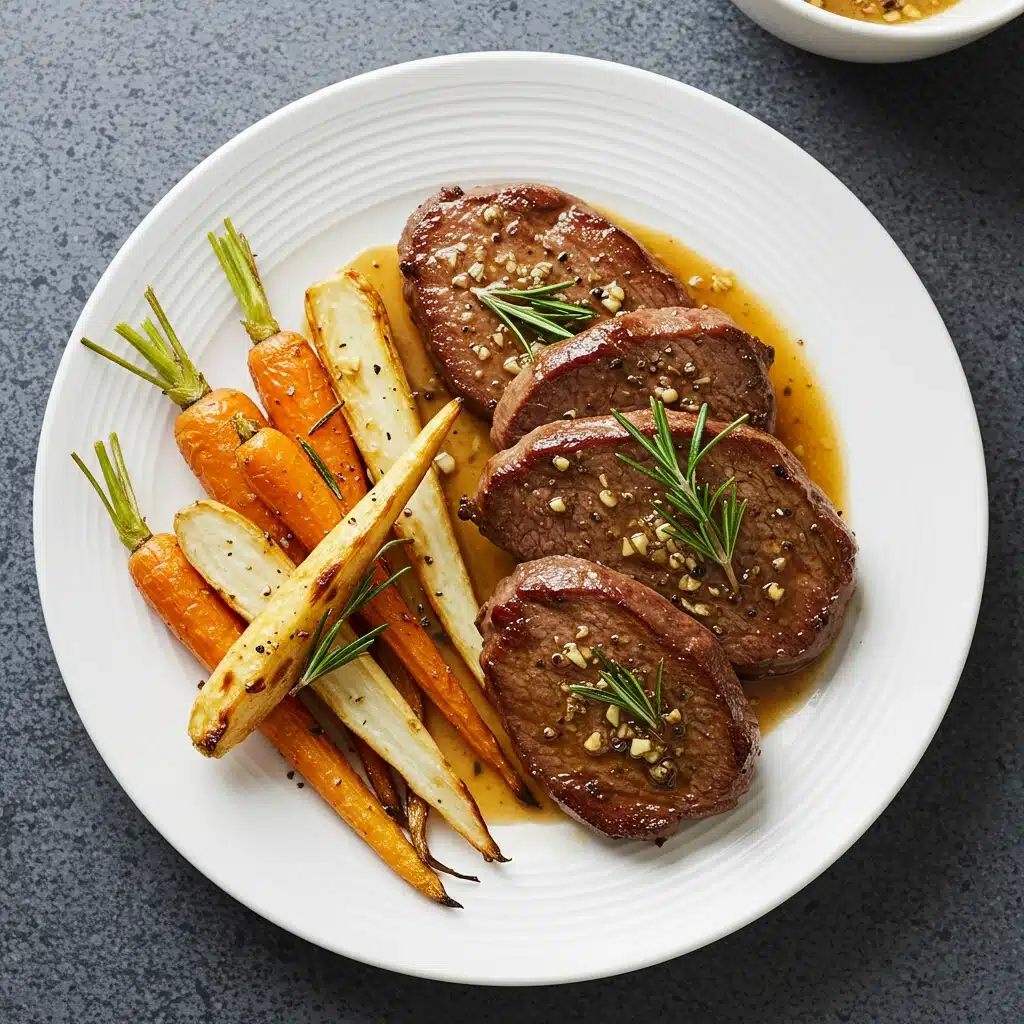Method
- Pat the elk backstrap dry with paper towels. Season generously with salt and pepper on all sides. Let it sit at room temperature for about 30 minutes before cooking. This helps it cook more evenly.
- Heat olive oil in a large cast iron skillet over high heat until it's smoking hot. Carefully place the elk backstrap in the skillet and sear for 2-3 minutes per side, until a deep brown crust forms. Don't overcrowd the pan; sear in batches if necessary.
- Reduce the heat to medium. Add butter, minced garlic, and fresh rosemary sprigs to the skillet. As the butter melts, tilt the pan and use a spoon to continuously baste the elk backstrap with the butter and herb mixture for another 2-3 minutes.
- For medium-rare, cook until a meat thermometer inserted into the thickest part registers 130-135°F (54-57°C). For medium, aim for 135-140°F (57-60°C). Cooking time will vary depending on the thickness of the backstrap and your desired level of doneness. You can finish cooking in a preheated oven at 375°F (190°C) if needed for more even cooking, especially for thicker cuts.
- Remove the elk backstrap from the skillet and place it on a cutting board. Tent loosely with foil and let it rest for at least 10 minutes. This is crucial for the juices to redistribute, resulting in a more tender and flavorful backstrap. Slice against the grain and serve immediately. Garnish with fresh rosemary sprigs if desired.
Nutrition
Notes
Tips for Perfect Elk Backstrap:
- Don't Overcook: Elk is best served medium-rare to medium. Overcooked elk can become tough and dry. Use a meat thermometer to ensure accurate doneness.
- Resting is Key: Allowing the meat to rest after cooking is essential for tender and juicy results. Don't skip this step!
- Flavor Enhancements: Feel free to add other aromatics like thyme, shallots, or juniper berries to the skillet for extra flavor.
- Serving Suggestions: Elk backstrap pairs wonderfully with roasted vegetables, mashed potatoes, wild rice pilaf, or a fresh salad.
